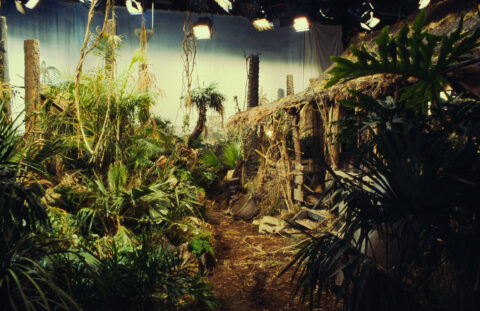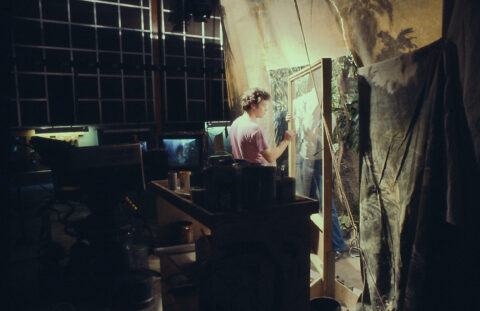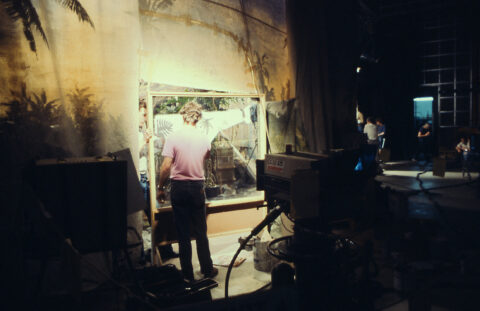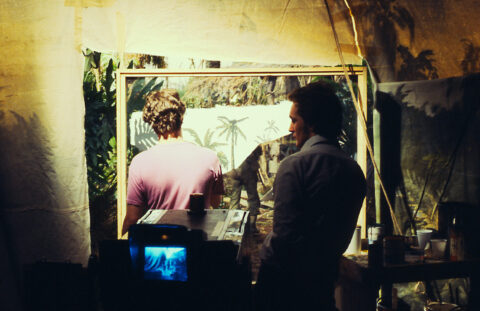Programme making continually evolves taking advantage of new technologies and processes. Such evolution allowed many previously studio-based drama productions to move to location-based. During a location shoot a very wide angle shot may be required, one that includes unwanted scenic elements. A modern production can employ low-cost off the shelf software to remove the unwanted elements.
Studio-based drama productions made before the low-cost tools had to use a different approach, painting out the unwanted elements as the pictures were captured and recorded. The following picture shows part of a set in Pebble Mill Studio A that required such a wide shot. At the top of this picture we see the studio lights and at least one scenery winch. These elements were removed from the recorded TV camera pictures by using a “glass shot”.

Photo by Andy Woodhouse, no reproduction without permission.
A TV camera is placed outside the physical set, the lens angle and focus are set. A large piece of clear glass mounted in a solid wooden frame is placed between the camera and the physical set, as shown in the following picture. The areas of the scene that are to be hidden are masked out by painting the required content onto the glass.

Shows the camera at the left side, with the artist, Steve Mitchell, painting onto the glass to add the scenery extensions. The artist’s monitor showing the composited image is just to the left of centre. Photo by Andy Woodhouse, no reproduction without permission.
The large EMI 2001 TV camera is just at the left of the picture centre. Just to the right of the camera is the high quality TV monitor the artist uses to check the composited image. Two artists are working on the painting. One paints the scenery on the front of the glass, the second paints an opaque mask on the rear of the glass to ensure solid details in the painted area are not diluted by any light falling onto the rear of the glass.The picture below shows more detail of the scenery that is being added to the scene. If the glass is moved, or the camera moved or otherwise adjusted, the entire paint process has to be restarted.

Cutout in the scene cloth, the glass in the frame, and the two artists at work. Photo by Andy Woodhouse, no reproduction without permission.
The final picture shows more detail of the painted scene elements. The tops of the trees are aligned to the trunks on the picture of the physical set.

Detail of the painted glass. Photo by Andy Woodhouse, no reproduction without permission.
The glass scene painting is a highly skilled job, any error would break the illusion of a full physical set in the studio.
Andy Woodhouse